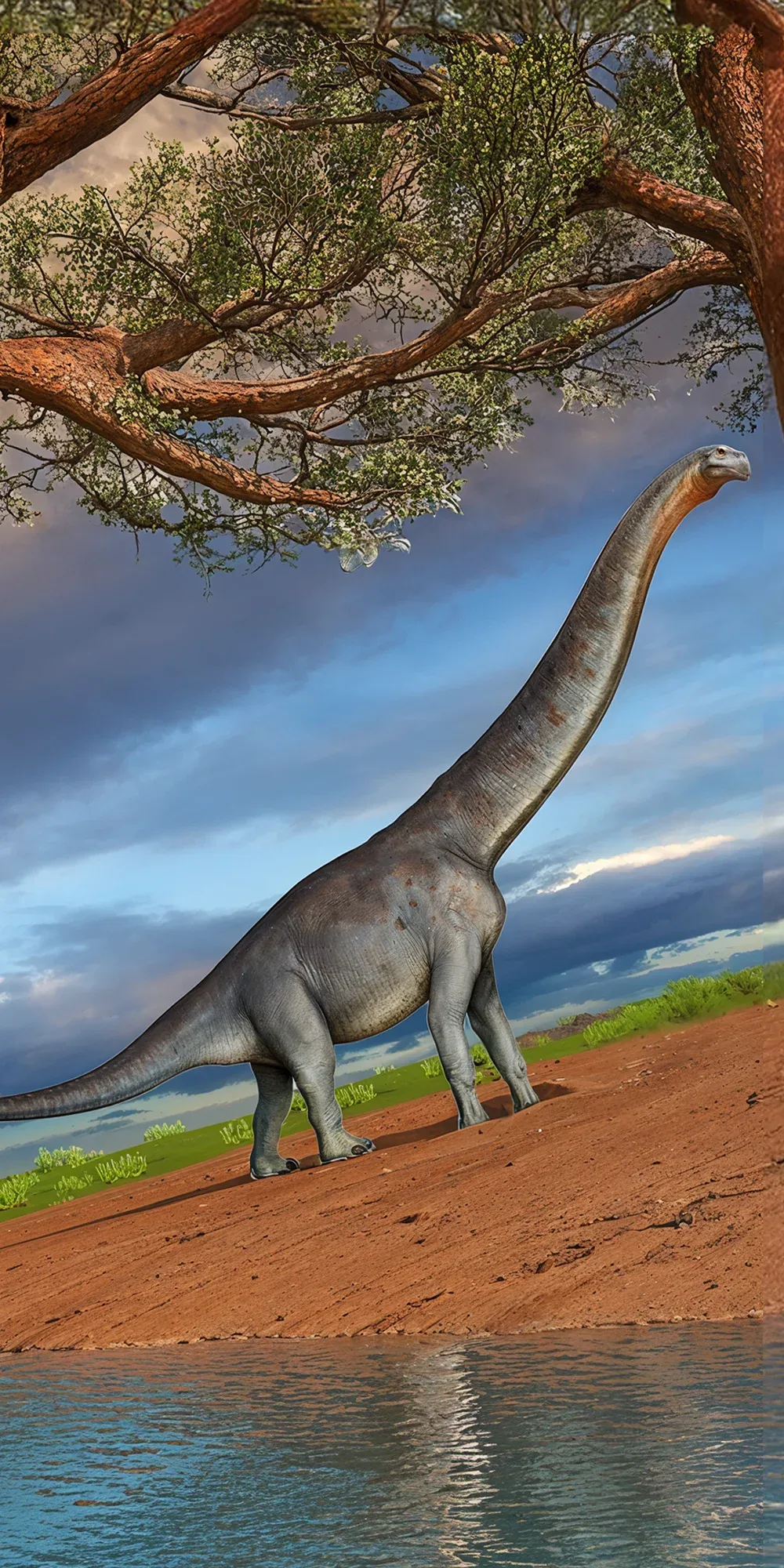The Phuwiangosaurus
The Phuwiangosaurus, also known as the "Phuwiang lizard," was a herbivorous dinosaur that lived during the Early Cretaceous period. It was a sauropod, meaning it had a long neck, small head, and a massive body supported by four sturdy legs. Phuwiangosaurus likely roamed the forests in what is now Thailand, feeding on plants with its peg-like teeth.

| Phuwiangosaurus | |
|---|---|
| Size | Up to 15 meters (49 feet) long |
| Weight | Several tons |
| Speed | 23 mph (37 km/h) |
| Key Strength | Long reach with neck |
| Biggest Weakness | Limited mobility |
| Scientific Name | Phuwiangosaurus |
| Family | Titanosauridae |
| Habitat | Land |
| Geography | Thailand |
| Diet | Herbivorous |
| Lifespan | 60 years - 70 years |

The Phuwiangosaurus
The Phuwiangosaurus, also known as the "Phuwiang lizard," was a herbivorous dinosaur that lived during the Early Cretaceous period. It was a sauropod, meaning it had a long neck, small head, and a massive body supported by four sturdy legs. Phuwiangosaurus likely roamed the forests in what is now Thailand, feeding on plants with its peg-like teeth.
Fun Fact: Phuwiangosaurus was one of the largest dinosaurs to have roamed the Earth, reaching lengths of up to 60 feet and weighing around 10 tons.
| Phuwiangosaurus | |
|---|---|
| Size | Up to 15 meters (49 feet) long |
| Weight | Several tons |
| Speed | 23 mph (37 km/h) |
| Key Strength | Long reach with neck |
| Biggest Weakness | Limited mobility |
| Scientific Name | Phuwiangosaurus |
| Family | Titanosauridae |
| Habitat | Land |
| Geography | Thailand |
| Diet | Herbivorous |
| Lifespan | 60 years - 70 years |
Phuwiangosaurus Matchups
We use AI to simulate matchups between the Phuwiangosaurus and other animals. Our simulation considers size, strength, and natural predatory behaviors to determine the most likely outcome.
Phuwiangosaurus: Diet, Predators, Aggression, and Defensive Behaviors
What did Phuwiangosaurus eat?
Phuwiangosaurus were herbivorous dinosaurs, meaning they primarily ate plants. They likely fed on vegetation such as ferns, cycads, and other low-lying plants that were prevalent during the Early Cretaceous period.
Did Phuwiangosaurus have any predators?
As large sauropod dinosaurs, Phuwiangosaurus would have been relatively safe from most predators due to their size and strength. However, they may have still been vulnerable to large theropod dinosaurs like Spinosaurus or Carcharodontosaurus.
Were Phuwiangosaurus aggressive?
Phuwiangosaurus were typically peaceful herbivores and would likely only become aggressive if they felt threatened or provoked. Their massive size and long necks may have been used for display or intimidation rather than outright aggression.
Did Phuwiangosaurus fight?
While Phuwiangosaurus may have engaged in some form of combat for dominance or mating purposes, there is limited evidence to suggest that they were particularly aggressive towards each other. Their size may have been enough to deter most conflicts.
How did Phuwiangosaurus defend themselves?
Phuwiangosaurus likely relied on their size and strength as their primary defense mechanisms. Their sheer bulk and long necks may have made them difficult targets for predators, and their ability to move in herds may have provided safety in numbers.
What was Phuwiangosaurus' biggest weakness in a fight?
Despite their size and strength, Phuwiangosaurus may have been susceptible to attacks on their vulnerable underside, particularly their soft underbelly. Their long necks and tails could also potentially be targeted by predators looking for a weak spot in their defenses.
Fun Fact: Despite their enormous size, Phuwiangosaurus likely moved relatively gracefully, using their long necks to reach vegetation high up in the trees.
Fun Fact: Fossilized footprints attributed to Phuwiangosaurus have been discovered in Thailand, providing valuable insight into the dinosaur's behavior and movement patterns.










